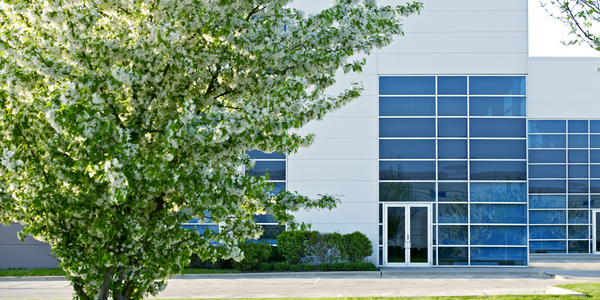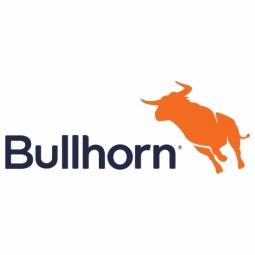技术
- 应用基础设施与中间件 - 数据交换与集成
- 平台即服务 (PaaS) - 应用开发平台
适用行业
- 水泥
适用功能
- 销售与市场营销
用例
- 行为与情绪追踪
- 租赁金融自动化
服务
- 系统集成
关于客户
Harrington Starr 是一家正在经历快速国际增长的金融科技招聘巨头。该公司从事金融服务技术和销售招聘领域的业务,业务遍及欧洲、中东和非洲 (EMEA) 和北美。 Harrington Starr 正在寻找一个能够跟上其快速发展的业务并提供高级功能以增强用户体验的网站。该公司需要一种在技术、集成、安全性和合规性方面不会很快过时的解决方案。 Harrington Starr 的一个关键要求是能够与 Bullhorn 集成。
挑战
金融科技招聘巨头 Harrington Starr 面临着网站过时的挑战。该网站未能跟上公司快速国际增长的步伐,仅提供基本功能。它基本上已经成为一个包含基本求职和一些博客的主页,缺乏该公司计划反映其品牌的令人兴奋的视频和内容。该网站还缺乏增强用户体验的必要功能。该公司需要一个能够随着其业务的发展而增长,并且在技术、集成、安全性和合规性方面不会很快过时的网站。 Harrington Starr 的一个关键要求是该技术可以支持与 Bullhorn 的集成。
解决方案
Harrington Starr 与 Volcanic 和 Bullhorn 合作建立了一个与其 CRM 集成的最先进的旗舰网站,以提供出色的用户体验。 Volcanic 的软件即服务平台因其效率、新版本的持续部署以及对招聘技术的关注而被选中。该平台的集成能力和战略合作伙伴方式也是做出这一决定的关键因素。 Volcanic 平台通过其仪表板驱动的报告功能提供了对候选人现场行为的宝贵见解。该数据可用于为下一次营销活动提供信息。报告还显示了哪些广告和职位表现最好,为已完成的交易提供了透明度,并为招聘人员创造了竞争优势。
运营影响

Case Study missing?
Start adding your own!
Register with your work email and create a new case study profile for your business.
相关案例.

Case Study
System 800xA at Indian Cement Plants
Chettinad Cement recognized that further efficiencies could be achieved in its cement manufacturing process. It looked to investing in comprehensive operational and control technologies to manage and derive productivity and energy efficiency gains from the assets on Line 2, their second plant in India.

Case Study
Digital Transformation of Atlanta Grout & Tile: An IoT Case Study
Atlanta Grout & Tile, a Tile, Stone & Grout restoration company based in Woodstock, Georgia, was facing challenges with its traditional business model. Despite steady growth over the years, the company was falling behind the web revolution and missing out on the opportunity to tap into a new consumer base. They were using independent software from different vendors for each of their department information and workforce management. This resulted in a lot of manual work on excel and the need to export/import data between different systems. This not only increased overhead costs but also slowed down their response to clients. The company also had to prepare numerous reports manually and lacked access to customer trends for effective business decision-making.

Case Study
Revolutionizing Construction Equipment Rental: A Case Study on ProsRent and ENO8
ProsRent, a startup that won the 'Best Financial Opportunity' and 'Best Pitch' at CodeLaunch 2016, aimed to revolutionize the way construction professionals source and rent heavy equipment. In the construction industry, project managers and contractors typically rent heavy equipment from supply companies. However, predicting inventory can be challenging, and finding the required equipment at the right time and place can be a hassle. If the preferred vendor doesn't have the required equipment, it results in wasted time and money in searching for it, often leading to higher costs due to non-preferred rates and increased delivery costs if the vendor is located far from the job site. Suppliers, on the other hand, desired access to a wider base of trusted renters that they didn't have to vet themselves and wanted to offer dynamic rental pricing based on demand and availability in their market. ProsRent's challenge was to produce a minimum viable product that was fast and first to market but also strong enough to engender loyalty and repeat business from the target market.

Case Study
AI-based Automation for Commercial Office HVAC: A Verdigris Case Study
Modern buildings are required to run longer hours, support a variety of end uses, and contribute to higher levels of economic productivity, leaving a thin margin for error. However, even the most advanced building and environmental control systems have failed to adequately support facilities and operations management. Buildings are often inefficient and the people using them are underserved. To meet occupant comfort and maintain cost and energy efficiency, a dynamic, AI-assisted approach is needed.

Case Study
Revamping EE's Legacy ERP: A Case Study on BT's Strategic Transformation
EE, even after its merger with BT, was operating its ERP estate on legacy infrastructure, hosted on the premises of a third-party supplier. This outdated system resulted in a volume-based operational model, higher time to market, longer delivery cycles, and unsatisfactory customer experience. BT recognized the need for a strategic transformation of these aging ERP systems and sought a partner who could proactively manage application services. The partner was also expected to handle development requirements associated with application management services, drive accountability, and ownership with a time and target-driven transformation of these services. BT's primary goals were to improve customer experience, reduce cycle time, and measure these improvements with precision.








